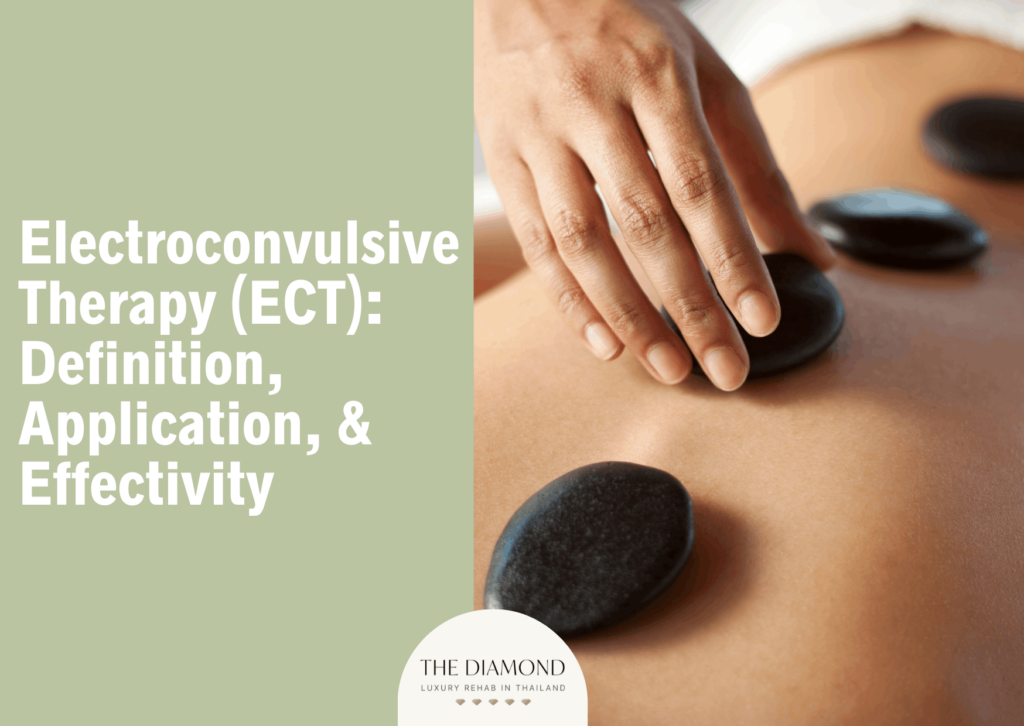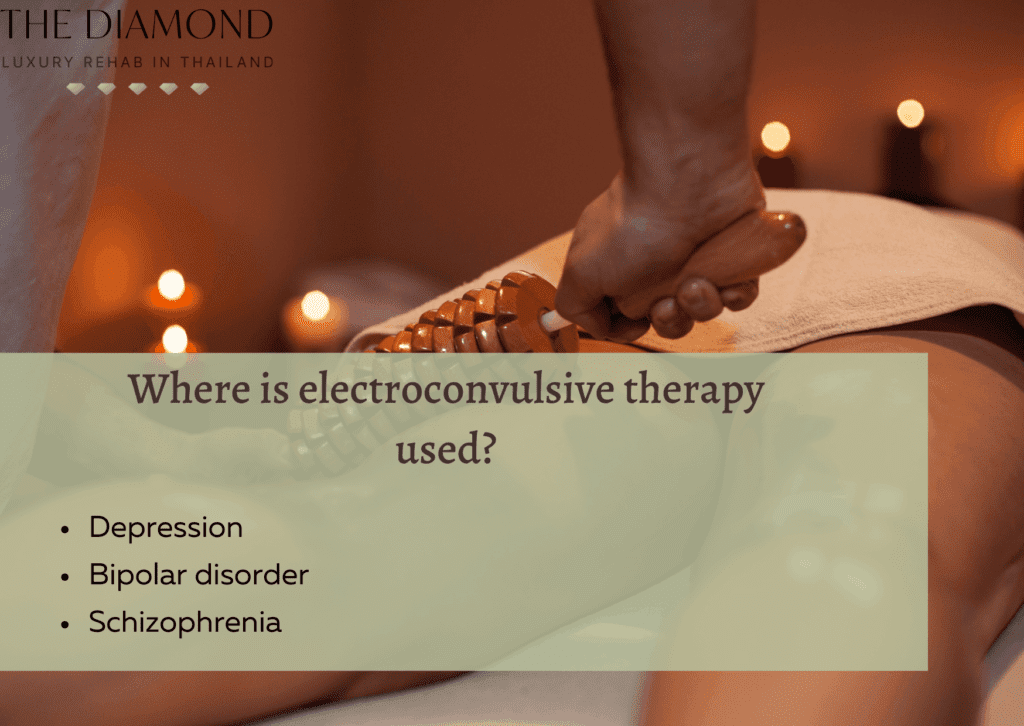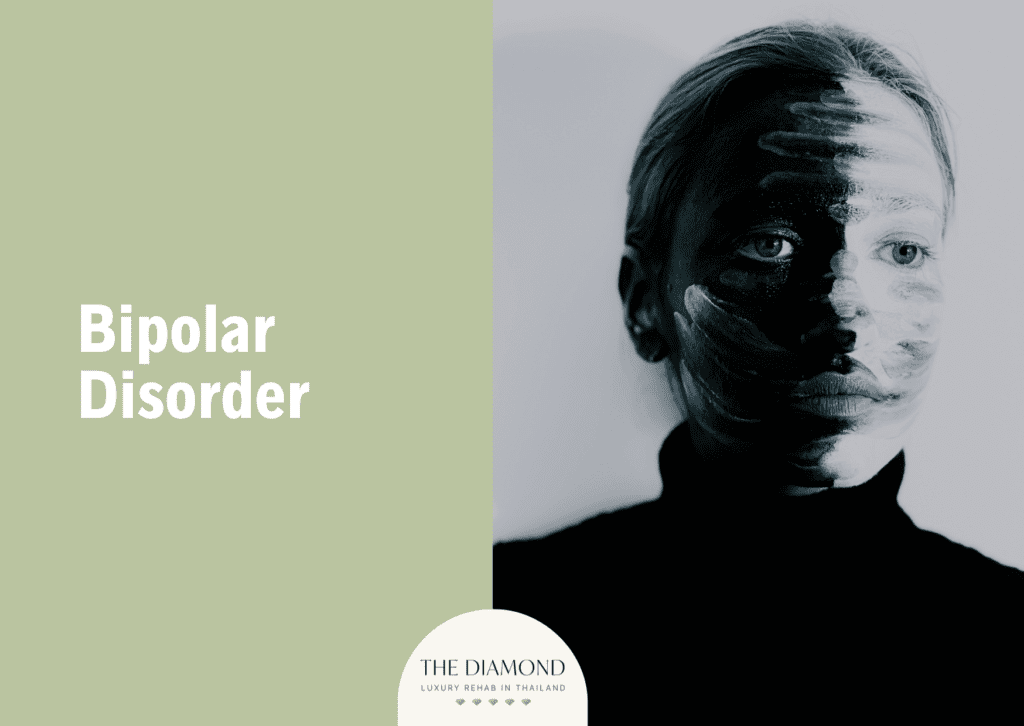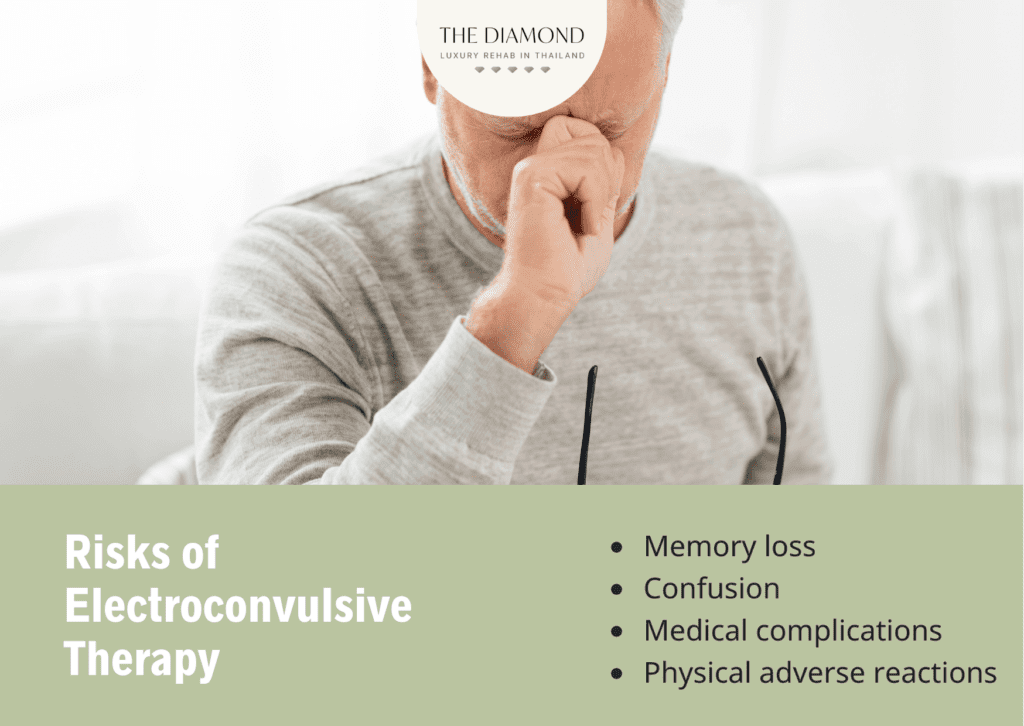Electroconvulsive therapy (ECT): definition, application, and effectivity

Electroconvulsive therapy involves placing electrodes on a person’s head to induce seizures that manage symptoms of mental health conditions such as depression. It’s among the oldest procedures in psychiatry. General anesthesia is used so that the patient doesn’t feel anything. Electroconvulsive therapy is both safe and effective.
Numerous people benefit from this procedure. The most common uses of electroconvulsive therapy are for the management of depression, bipolar disorder, and schizophrenia. It is particularly useful for treatment-resistant cases.
What is electroconvulsive therapy?
Electroconvulsive therapy (ECT) is a therapy or more of a procedure that sends electrical currents through the brain to trigger a brief seizure in order to help manage a specific mental health problem.
It is one of the oldest treatments in psychiatry. It was developed in 1938 by Ugo Cerletti, a professor of neuropsychiatry, and his assistant Lucio Bini at the Sapienza University of Rome.
Even before Cerletti and Bini, physicians experimented with inducing seizures to treat psychiatric conditions. These practices date back to the 16th century. In the 18th century, more precisely in 1785, the first therapeutic use of seizure induction was documented. Even Benjamin Franklin wrote about a woman whose hysterical fits were cured by an electrostatic machine.
Hungarian neuropsychiatrist Ladislas J. Meduna was the first to introduce convulsive therapy back in 1934 after he mistakenly believed that epilepsy and schizophrenia were antagonistic disorders. Meduna’s therapy relied on the use of camphor and later metrazol (cardiazol).
What made Cerletti and Bini different is that they used electricity as a substitute for metrazol, a stimulant drug. The idea to use electricity to produce seizures came to Cerletti when he saw how pigs were put in an anesthetized state with an electric shock before they were butchered.
It didn’t take long for ECT to replace the above-mentioned metrazol therapy across the globe because it was more affordable, less frightening, and more convenient.
Electroconvulsive therapy is not a common procedure because it’s usually not the first-line treatment for mental health problems. A therapist recommends ECT when other approaches fail to deliver desired effects.
How does electroconvulsive therapy work?
Electroconvulsive therapy works by inducing a small generalized tonic-clonic seizure. During the procedure, a small electric pulse is delivered to the brain for a few seconds. As a result, the brain cells fire in unison. That’s how a seizure happens.
The exact mechanism through which ECT and seizure work is unknown. The therapy changes how the brain works. In a way, it’s similar to restarting a computer after a small glitch appears. The electric pulse is believed to trigger an instant increase in serotonin and dopamine levels.
These neurotransmitters regulate mood, and their imbalance contributes to depression and other problems. At the same time, electroconvulsive therapy propels a release of endorphins (mood-elevating chemicals).
A 2017 review article by Amit Singh and Sujita Kumar Kar in the journal Clinical Psychopharmacology and Neuroscience stated how various studies have demonstrated that ECT improves cerebral blood flow and glucose metabolism. The study added that ECT causes changes in the volume of the brain’s white matter, gray matter, and other structural components as well as the brain as a whole.
All these effects explain why ECT helps reduce symptoms of mental health disorders. Depression and other conditions are linked to changes in the brain’s structure and function.

Where is electroconvulsive therapy used?
Electroconvulsive therapy is used in the management of mental health conditions with a serious impact on a person’s mood and perception of reality. The most significant uses of electroconvulsive therapy are listed below:
- Depression
- Bipolar disorder
- Schizophrenia
1. Depression
Depression is a mood disorder characterized by persistent and overwhelming feelings of hopelessness, sadness, and social isolation. People with depression experience other symptoms as well. Depression harms the overall quality of life. A person with depression loses interest in activities they used to enjoy.
The main treatment routes for depression management are antidepressants and therapy. In certain cases, electroconvulsive therapy is recommended, particularly when depression is severe and accompanied by psychosis, refusal to eat, and suicidal ideation. People with treatment-resistant depression benefit from electroconvulsive therapy too. This therapy is particularly useful for patients aged 60 or older.
Electroconvulsive therapy helps treat depression by changing certain connections in the brain. It is comparable to rebooting a computer. A 2017 study by Chang et al., published in Neuropsychopharmacology found that electroconvulsive therapy induces the development of new brain cells in the hippocampus.
Furthermore, a paper by Li et al., published in the February 2020 issue of Frontiers in Psychology explained that electroconvulsive therapy is associated with neurogenesis and heightened volume in particular brain areas. This led to improvements in behavior and neuroplasticity. Electroconvulsive therapy works on its own or in combination with antidepressants.
The specific number of sessions in the treatment of depression varies from one patient to another. Six to 12 sessions are necessary, but certain patients need less or more than that. Patients usually receive therapy two to three times a week. More precisely, the number of sessions necessary for recovery is similar for all uses of ECT.
2. Bipolar Disorder

Bipolar disorder is a mental health condition that causes extreme changes in behavior from symptoms of depression to euphoria (mania). People experience intense emotional or mood-related highs and lows.
When left untreated, bipolar disorder causes complications such as poor work or school performance, damaged relationships, legal and financial problems, substance abuse, and suicidal thoughts and tendencies.
Patients with bipolar disorder usually receive a combination of medications and therapy to overcome the symptoms they experience. Electroconvulsive therapy is a viable strategy for the treatment of bipolar disorder, especially its depressive episode. It helps with mania, too.
Results from a 2017 paper by Perugi et al., published in Current Neuropharmacology indicated that ECT has demonstrated efficacy and safety as a treatment for all phases of severe, drug-resistant bipolar disorder. Additionally, it decreased the duration of hospitalization and admission rate for BD patients.
The mechanisms of action of electroconvulsive therapy are still unknown, but a theory is that it helps manage bipolar disorder by changing the brain’s chemistry.
How long it takes to recover from symptoms of bipolar disorder with ECT varies from one patient to another. The severity of symptoms and whether a patient is using medications are important factors. Six to 12 treatments two to three times a week are usually necessary.
3. Schizophrenia
Schizophrenia is a serious mental illness that changes a person’s perception of reality. People with schizophrenia tend to experience symptoms such as hallucinations, delusions, paranoia, and disorganized speech and thoughts. This mental illness has a major impact on a patient’s daily functioning, and is often disabling.
While schizophrenia strongly affects someone’s quality of life, the symptoms are manageable. Electroconvulsive therapy is an important treatment strategy for patients with schizophrenia, and the evidence confirms it.
For example, a 2019 review by Grover et al., in Acta Neuropsychiatrica concluded that ECT is useful not just as an adjunctive therapy in cases of treatment-resistant schizophrenia but additionally in a variety of different contexts where individuals with schizophrenia are able to benefit from its application.
Doctors usually recommend ECT to patients with schizophrenia to augment their pharmacotherapy. Other common reasons are the urgency of therapeutic response and treatment resistance. Electroconvulsive therapy is particularly effective in the treatment of catatonic schizophrenia.
The therapy changes the function of certain areas of the brain that are associated with schizophrenia symptoms. By acting on these areas, ECT helps lower the frequency and intensity of the symptoms faster than medications do.
The doctor or therapist determines the ideal number of therapy sessions to treat schizophrenia. Patients usually need two to three sessions a week for four to six weeks to experience significant improvements in their recovery. Certain people with schizophrenia need a total of 20 sessions of ECT. A higher number of sessions is associated with better improvement of symptoms.
What are the benefits of Electroconvulsive Therapy?
The benefits of electroconvulsive therapy are numerous and confirm why it’s an important component for the improvement of mental health in people with specific illnesses. The advantages of electroconvulsive therapy outnumber and outweigh the risks. Common benefits of electroconvulsive therapy are listed below:
- Effectiveness: Electroconvulsive therapy is among the most effective treatments for mood disorders and psychosis. It is particularly important for people whose mental health problem has become treatment-resistant.
- Works quickly: People who undergo this therapy usually experience improvements in symptoms of their mental illness after just a few sessions.
- Safety: Electroconvulsive therapy carries a low risk of adverse reactions meaning it’s safe for most people. Even people with heart problems are able to do ECT after certain adjustments to their medications or with close monitoring. The best testament to the safety problem of ECT is its safety during pregnancy.
- Helps people to whom other treatments aren’t available: Certain people have health conditions that don’t allow them to take medications to manage their mental health problems, but ECT is still a viable option for them.
- Effective as an adjunctive therapy: Electroconvulsive therapy is effective in combination with other medications. This gives patients higher chances of improving successfully.
What are the risks of Electroconvulsive Therapy?

The risks of electroconvulsive therapy are fewer than all the benefits this treatment provides. The risks of electroconvulsive therapy are listed below:
- Memory loss: Certain patients experience difficulty remembering events just before the procedure. At times, they can’t remember events that happened weeks or months before the treatment. In rare cases, patients forget events that occurred in previous years. Memory problems tend to improve within a couple of months after the completion of the treatment. Memory loss happens because the brain area that retrieves memories is strongly affected by electrical stimulation. To avoid that problem, practitioners make treatment patient-centric. In other words, they modify the type of anesthesia, placement of electrodes, and the time between two sessions.
- Confusion: Right after the treatment, patients tend to experience confusion. At that point, they don’t know where they are or why they’re in a hospital. Rare are the cases when confusion lasts longer than a few hours. Older adults are more likely to have confusion after ECT.
- Medical complications: Every procedure carries a certain risk of medical complications, especially when it involves general anesthesia. Electroconvulsive therapy isn’t an exception. This therapy potentially leads to serious heart problems because heart rate and blood pressure increase during the session. For that reason, ECT is possibly risky for people who have heart disease.
- Physical adverse reactions: Other patients experience side effects such as headache, nausea, muscle ache, temporary anxiety, shakiness, fatigue, and jaw pain. They tend to occur after the procedure and last a few days, but it’s possible to manage them with medications.
What is the process of Electroconvulsive Therapy?
The process of electroconvulsive therapy lasts five to 10 minutes. The first part of the process accounts for preparation. This is when a patient is put under general anesthesia.
The patient needs a brief physical exam whose main purpose is to check their lungs and heart. Before the procedure, the medical team inserts an intravenous (IV) line through which medications and fluids are given. Preparation involves placing electrodes on a patient’s head.
When a patient is asleep, and their muscles are relaxed, the doctor presses the button on the ECT machine to induce a brief seizure. A small amount of the electric current is passed through the electrodes to the brain. The seizure lasts less than 60 seconds.
After the short procedure, a patient is taken to the recovery area, where the medical staff monitors them for potential problems. After waking up, a patient is likely to feel confused for a few minutes up to a few hours.
Electroconvulsive therapy isn’t painful, especially because it’s done under general anesthesia, meaning the patient is asleep the whole time.
What does an electroconvulsive therapist do?
The electroconvulsive therapist performs a thorough psychiatric assessment to ensure a patient truly benefits from this therapy. The ECT itself is performed by a medical team consisting of a psychiatrist, anesthesiologist and nurse or physician assistant.
In other therapies, it’s just a patient and a therapist. Since ECT is different, not talk therapy, a small medical team is necessary to implement it.
The main role of a psychiatrist is to direct the whole treatment. The psychiatrist determines the number of treatment sessions necessary based on the patient’s symptoms and the severity of their condition.
Another description of a psychiatrist’s role in ECT is to recommend other treatment approaches they deem helpful for a patient. They combine ECT with other types of therapies to prescribe medications.
How is Electroconvulsive Therapy done?
Electroconvulsive therapy is done when a patient is hospitalized or in an outpatient setting. For example, if a patient is hospitalized for severe symptoms of schizophrenia or other mental illness, they receive ECT to reduce the severity of their symptoms.
The patient continues their hospital stay until they are discharged. When ECT is done in the outpatient setting, a patient leaves the hospital or clinic on the same day.
As mentioned above, for ECT, electrodes are placed on the patient’s head. The placement of electrodes depends on the specific needs of each patient. The healthcare provider makes sure to choose a placement with the lowest risk of side effects. It is done in three ways.
The first way to place electrodes is called right unilateral, meaning both of them are placed on the right side of the head. One electrode is placed between the temple and the end of the eyebrow, whereas the other is attached near the top of the patient’s head and above the right ear.
The second way is called bifrontal, meaning electrodes are placed on the opposite sides of the forehead above the end of the eyebrows.
The third way to place electrodes is called bitemporal. That means electrodes are aligned within the temple region on both sides of the head. To prevent irritations and skin burns, the doctor coats electrodes with conductive gel.
How many sessions are required for Electroconvulsive Therapy?
The number of sessions required for electroconvulsive therapy range from four to 20. Most people need between six and 12 sessions. The ECT sessions usually take place three times a week.
In a 2020 retrospective study by Ittasakul et aL., published in the Neuropsychiatric Disease and Treatment, elderly patients needed more ECT sessions than adult ones. It is worth noting, however, that the specific number of sessions often vary from one patient to another depending on the severity of their condition.
Is Electroconvulsive Therapy Effective?
Electroconvulsive therapy is highly effective for the treatment of mental health illnesses such as major depression. The Journal of ECT published a study by Khalid et al., in 2017 which found that patients with major depressive disorder who are extremely resistant to treatment continue to benefit greatly from electroconvulsive therapy (ECT), with over half of these patients attaining remission.
Additionally, a review of evidence on this subject by Trifu et al., published in the November 2021 issue of Experimental and Therapeutic Medicine, confirmed that ECT is effective and safe for patients with depression. The therapy is particularly effective when combined with other treatment approaches.
Electroconvulsive therapy is effective for the management of bipolar disorder and schizophrenia as well. For numerous people who don’t respond to other treatment options, ECT is a good way to reduce the intensity of their symptoms.


